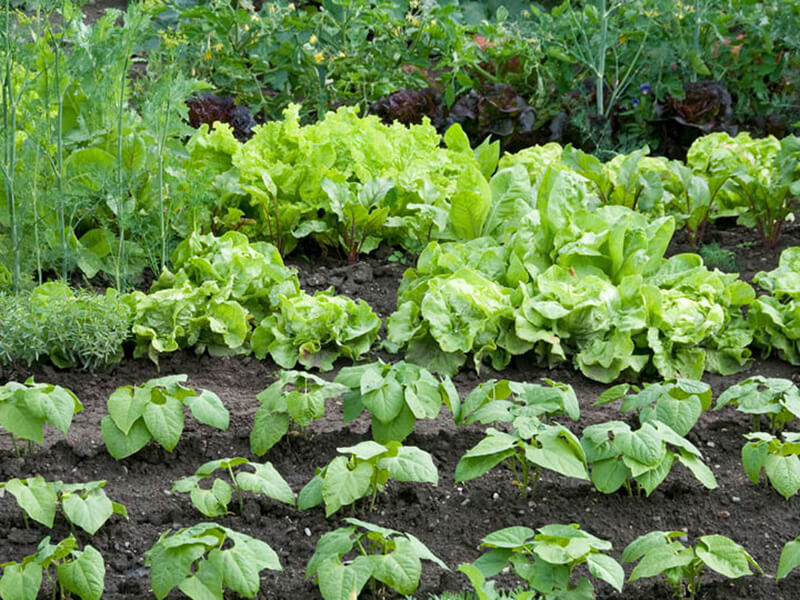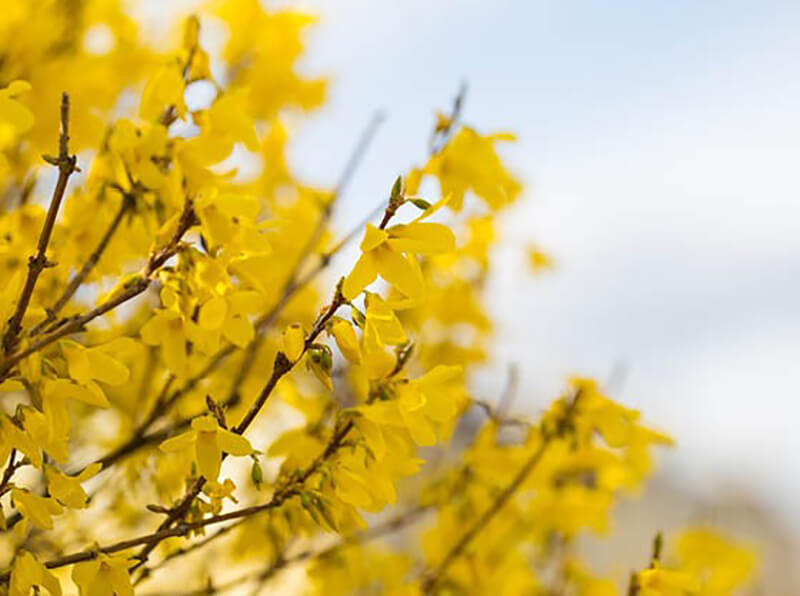Early Spring Gardening Steps

Spring is just around the corner! There are plenty of ways that you can start preparing for gorgeous Spring color. Rehabilitating your lawn and garden from the effects of harsh Winter conditions is crucial to having a successful Spring season. We put together a list of everything you can start doing outside now to make sure you have the most beautiful landscape as the weather gets warmer!
Tidy Up Your Terrain
Winter is tough on your lawn and garden. You may need to spend some extra time cleaning up due to the Winter’s snow, wind, and cold temperatures. Here are some tips for tidying up your terrain:
- Start spring cleanup and begin major lawn work. Remove debris, detach your lawn or aerate compacted areas to improve water penetration.
- Cultivate to remove winter weeds and debris from the planting beds. Apply corn gluten or a pre-emergent herbicide with fertilizer specified for gardens. Scratch it in to prevent future weeds. Some pre-emergents will need watered in after application. Do not use in gardens where you will be direct seeding. We carry both corn gluten and garden pre-emergent Preen products. Pre-emergents typically need watered in after application.
- Prune woody plants while dormant, including fruit trees, Summer and Fall blooming shrubs and vines.
- Limit pruning of spring-blooming trees and shrubs to the removal of sucker growth and rubbing or broken branches.
- Spray trees and shrubs with year-round horticultural oil to reduce insect population.
- Consider mulching areas of your landscape to help keep those weeds from returning next season.
Steps to Planning Your Garden
Planning is a major part of successful gardening! Think about what you want to see in your garden this Spring, and even later in the year. Are there specific colors that you have in mind? Do you want to dabble into growing fruit or vegetables that you never have before? Mapping out a clear vision of everything you’d like to accomplish is key! Here are some addition points to consider:
- Plan your summer vegetable and herb garden. We offer a wide selection of seeds that include all of your favorite annuals, perennials, vegetables and other novelties. Inventory your pots and flats and discard unusable ones. Make a list of the supplies you will need. Have your garden soil tested for nutrient content. We offer a variety of do-it-yourself soil test kits.
- Sharpen, clean and oil tools and lawn mowers. You want to be prepared!
- Begin heavy annual pruning of shrub roses as new leaves appear.

Taking Preventative Planting Measures
As the weather begins to turn warmer, you can begin preliminary planting and fertilizing. Fertilizing grass too early will not be as effective as it’s mostly still dormant until late Spring, though fertilizing early Spring perennials can be very beneficial. The following steps can be done early to mid Spring to achieve a successful garden:
- Plant pansies, English daisies and primrose as soon as the earth is workable. Plant Strawberry plants. Sow cool-season vegetables and herbs in the garden.
- Spray needles and limbs of Arborvitae, Cryptomeria, False Cypress, Fir, Hemlock, Juniper, Pine, Yew and Spruce (except Blue Spruce) for spider mites with year-round horticultural oil.
- Apply fertilizer to perennials and roses. Feed berry bushes, grapevines, rhubarb and asparagus a balanced 10-10-10 fertilizer before new growth begins.
- Fertilize trees and shrubs around your landscape.
- Apply crabgrass preventer with fertilizer to feed the lawn and control crabgrass. Do not use on newly seeded lawns.
- Reseed bare spots in established lawns. Keep the area moist until seedlings appear, then mow when the new grass is 3″ high. Restrain from using weed killers and preventers on newly seeded areas.

- Prune forsythia and other spring-flowering trees & shrubs after the flowers fall.
- Dig and divide crowded early spring bulbs after they finish blooming. Enrich the soil with bone meal.
- Plant and transplant trees and shrubs, including roses, ground covers, and perennials.
- Transplant cool-season seedlings into the garden. When the soil temperature reaches 60 degrees, sow warm-season vegetable and herb seeds.
- Place gro-thru sets over peonies, grasses or any other perennials in need of support.
Follow these tips and tricks to have a successful Spring gardening season! Select the best Perennials to plant in your Spring garden this season and start planning which types of annuals you’d like in your landscape this Summer!
We can also do the work for you! Check out the different Landscaping Design Services that we have to offer. We would love to help!
